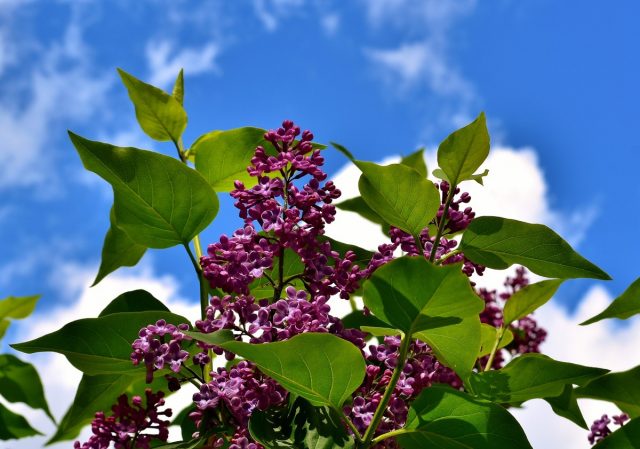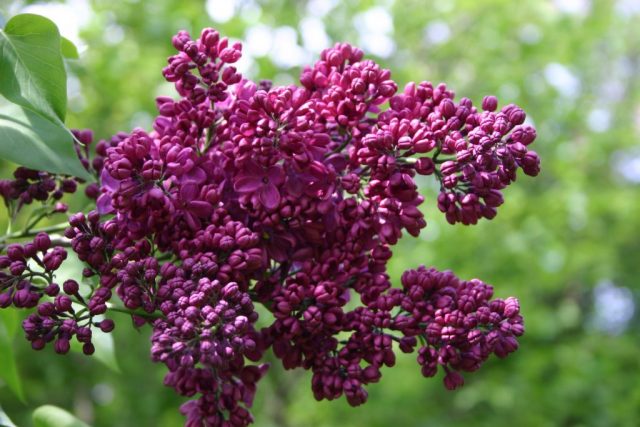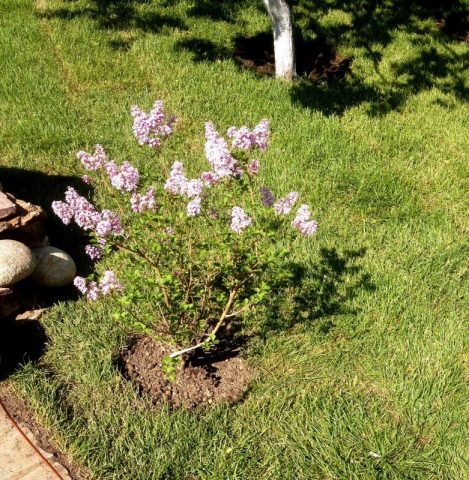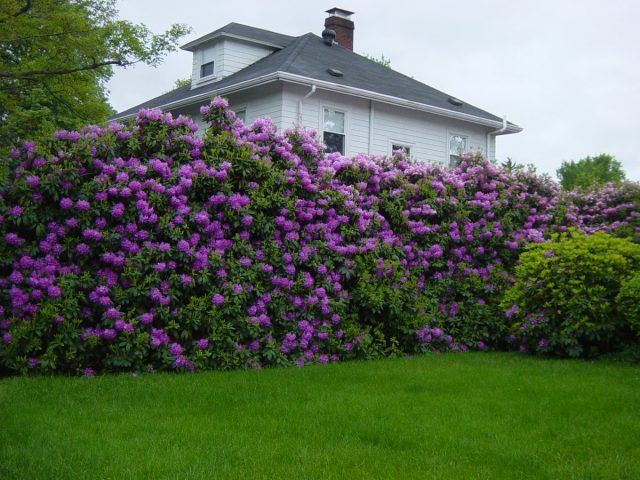Content
Lilac Banner of Lenin is a variety bred in 1953, the originator of which is L.A. Kolesnikov. The culture was created for breeding in cold climates. This is one of the few representatives of the species, for which the low temperature not only does not pose a threat, but also improves the quality of spring flowering.
Description of lilac Banner of Lenin
The Banner Lenin variety is a deciduous, frost-resistant plant that does not require increased attention from gardeners. Distributed throughout Russia, climatic conditions do not affect the growing season of the crop. Due to its drought resistance, lilacs are a frequent visitor to the southern household plots. The main distribution of the variety is in areas with a temperate climate.
The plant is used for landscaping city parks and squares, for decorating the territory of personal plots. Lilacs of the Banner Lenin variety are unpretentious to the composition of the soil, grows safely next to any representatives of the flora, therefore it is often used in landscape design compositions. Lilac Lenin Banner is a medium-sized compact shrub. Grows up to 3 m in height. The crown is dense, branched, dense, intensely leafy.
External characteristics of the lilac bush Lenin Banner, shown in the photo:
- The plant is multi-stemmed, the bark of perennial representatives is light brown with a rough surface and longitudinal shallow grooves. Young shrubs with smooth gray-green bark.
- Shoots end with two large flower buds, they are formed only on last year's branches. Leaf buds are smaller, oppositely located.
- Leaves are simple, opposite, up to 12 cm long, up to 7 cm wide. Located on long (3 cm) petioles. The sheet plate is smooth, one-piece, with even edges. Leaves are heart-shaped, pointed upwards, dense, dark green. Foliage does not change color by autumn, becomes dull, falls green.
- The fruits are in the form of a box with two nests, the seeds are small, equipped with a lionfish, after opening they fly away from the mother bush for several meters. Ripen at the end of September. Seeds after hitting the ground, germinate well in spring. They hibernate under the snow until conditions are favorable.
How the lilac blooms Lenin's Banner
Common lilac Lenin's banner belongs to varieties with an average flowering period. In cold climates, the shrub blooms in late May or early June. Due to the relatively late flowering period for the culture, the buds are rarely affected by recurrent frosts. In the South, the flowering period occurs at the end of April.
Wide panicle inflorescences are formed at the ends of the shoots, as a rule, there are no more than two of them. The shape of the inflorescence is pyramidal, the length is 15-20 cm. The flowers are simple, large - 2-2.5 cm, the petals are raised. At the time of blooming, the flowers are painted in dark red, when fully expanded they become purple-lilac. Flowering lasts 21 days.
Breeding features
The culture is bred generatively and vegetatively.The common lilac variety forms full-fledged seeds, which give plants that fully correspond to the characteristics of the mother bush. Planting material is sown immediately after collection. Stratification is carried out, the seeds are laid out on a damp cloth, then placed in the refrigerator for 2 days. Sow on the site 30 days before the onset of frost. According to reviews, the seeds of the lilac Banner of Lenin sprout in the spring together, but generative breeding is longer than vegetative.
The shrub gives a lot of root growth, it is separated and planted on the site. This is the fastest and least time consuming breeding method. Lilacs are propagated by cuttings, they are cut from last year's shoots in August, placed in a container with soil. In spring, cuttings will form roots, at the end of August they can be identified for a permanent place of growth. The method of propagation by layering is also suitable for the lilac Banner of Lenin. In the spring, they dig a longitudinal trench, bend the lower branch, and cover it with soil. The plant can be replanted next season.
Planting and caring for lilacs Banner of Lenin
The lilac of the Banner Lenin variety is an unpretentious plant, rooted well on the site, quickly grows, does not require special agricultural technology. Drought-resistant culture grows in open areas and in partial shade, it has enough seasonal rainfall.
Recommended timing
In Central Russia, shrubs are planted from late August to mid-September. Before the onset of frost, the lilac will take root and overwinter without loss. Late dates are suitable for the South, the plant is planted here from late September to mid-October. If the seedling does not have time to take root, there is a threat that it will not overwinter.
Site selection and soil preparation
The place for the Banner Lenin variety is chosen based on the design decision. You can arrange lilacs on a slope, flat rocky terrain, in partial shade or in an area open to the sun. The composition of the soil is slightly acidic, neutral, the main condition is that the soil should not be heavy. If the acidity is increased, it is neutralized with products containing alkali. Shrubs will not grow in wetlands.
The pit is prepared a few days before planting the lilac. Deepen, taking into account the volume of the root system. On average, the size is 50 * 50 cm, the depth is the distance from the root to the neck plus 20 cm (drainage and nutrient mixture).
How to plant correctly
Before planting lilacs, sod soil, sand and compost are mixed in equal proportions, about 8-10 kg. Divided into two equal parts. A concentrated clay solution is made, the roots of the planting material are dipped into it. Landing Algorithm:
- Take a seedling, it must be with foliage and a strong healthy root.
- One part of the prepared soil is poured onto the bottom of the pit, a hill is made.
- Lilacs are placed in the center on a hill.
- Distribute the root system along the bottom of the hole.
- Pour out the rest of the mixture, seal it so that there is no void.
- Then fill up with soil.
- The root collar is left above the surface.
- Then the soil is compacted along the root circle, watered abundantly.
Growing lilacs Banner of Lenin
Growing common lilac is a labor-intensive process that does not require material costs. Vegetation of young and adult shrubs takes place on their own with minimal intervention from the gardener.
Watering
An adult plant is watered in the spring before flowering; throughout the rest of the growing season, the shrub has enough rainfall. If the summer is dry, water the lilacs no more than once a month. Young seedlings are watered more often, the soil around the lilac should be moist, constantly loose, without weeds.
Top dressing
From the moment of planting, the shrub has not been fed for three years, the seedling has enough nutrients to grow in the planting pit. In subsequent years, organic matter is introduced in the spring: compost, rotted bird droppings. Mineral fertilizers are added to prevent bacterial and fungal infections (once every 3 years).
Mulching
Root cover is necessary for young seedlings in a temperate climate; for adult shrubs, the measure is irrelevant. After planting, dry leaves or sawdust are used as mulch. Needles or straw will do. A prerequisite is that the material must be dry. In the spring, the covering layer is removed. They carry out procedures up to three years of growth.
Pruning
Lilac pruning is carried out in accordance with the functional purpose in the design. If the Banner Lenin variety is planted by a single planting in a spacious area, it is enough for it to be healthy pruning. They do it only in the spring:
- cut the peduncles after flowering;
- remove dry fragments;
- cut out several perennial branches, during the season the lilac will form a replacement;
- get rid of root growth.
It is not recommended to remove peduncles in autumn, since lilacs may not bloom in spring.
Preparing for winter
The Banner Lenin variety is one of the frost-resistant representatives of lilacs, so preparatory measures for winter are minimal. A young plant does not need to be completely insulated, it is enough to spud and cover with a layer of mulch. If the shoots freeze over the winter, the shrub will quickly recover. If the summer season was dry, an adult plant is irrigated with water.
Diseases and pests
Lilac Banner of Lenin is affected by pests along with other varieties of culture. The plant is parasitized by a lilac moth, the pest is active from May to September. The presence is indicated by twisted leaves, inside of which an accumulation of caterpillars is noted. At any stage of development, the insect feeds on leaf juice. In the fight against adult moths and caterpillars use "Bi-58" or "Fozalon", make a solution and process the shrub. Dig up the root circle, remove the affected leaves. The rosaceous leafhopper is less common; the insect feeds on juice from the lower part of the leaves. Brown or yellow spots appear on the surface. Eliminate the pest with "Kemifos" or "Fitoverm".
From infections, powdery mildew is a danger to lilacs. It manifests itself as a gray bloom on the leaves. The fungal infection spreads quickly, and the affected leaves dry out and fall off. In the fight against the disease, fungicidal preparations are used, the damaged areas are removed. There is a bacterial infection (late blight). In order to prevent the disease from spreading, problem areas are cut off, chloride lime is introduced into the soil.
Conclusion
Lilacs Banner of Lenin is a variety of ordinary lilacs that are widespread throughout Russia. The plant is used in garden design, in landscaping city parks. The culture is frost-resistant, tolerates open sunny areas well, does not require special care. A dense, profusely flowering shrub of medium height will adorn any personal plot.












